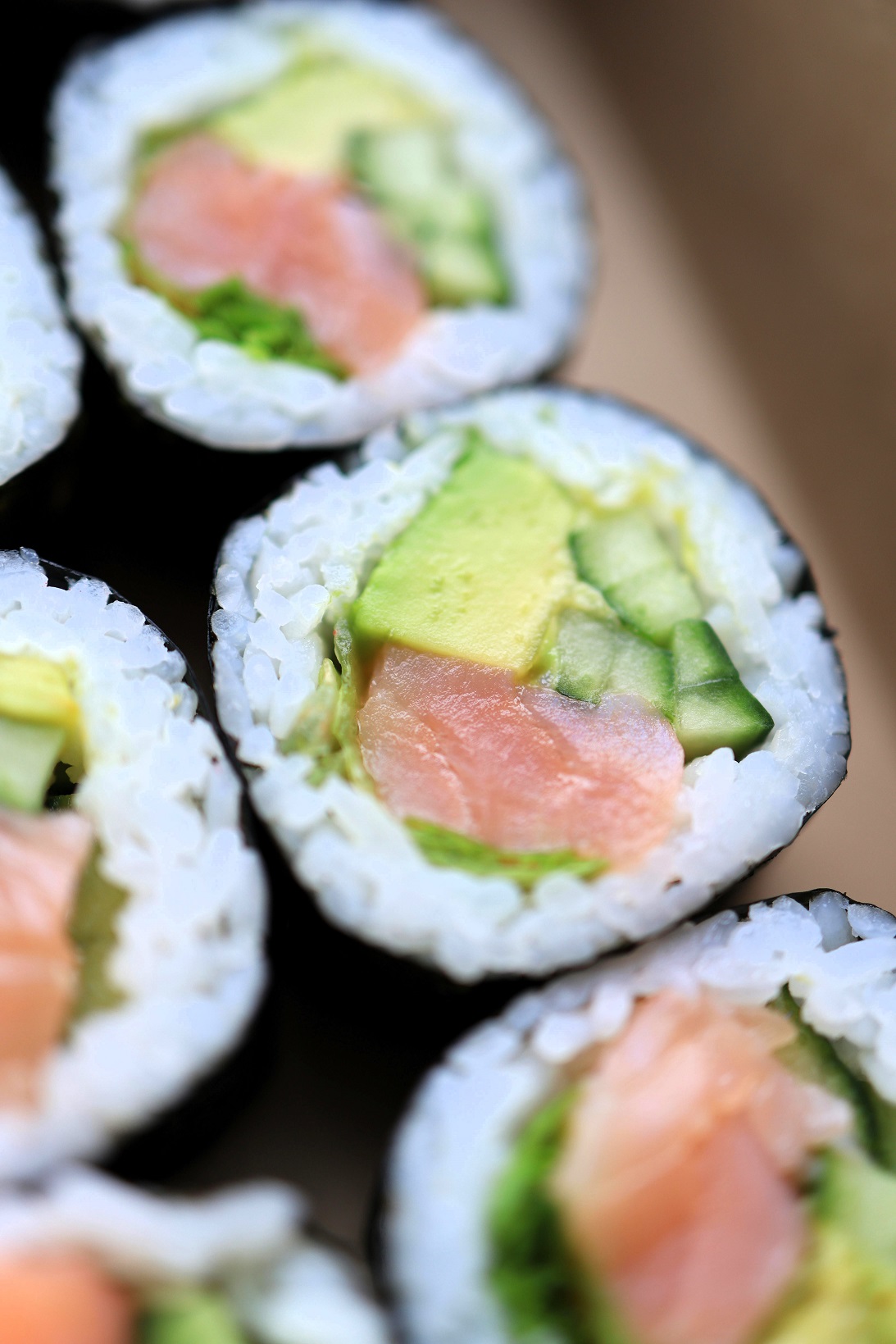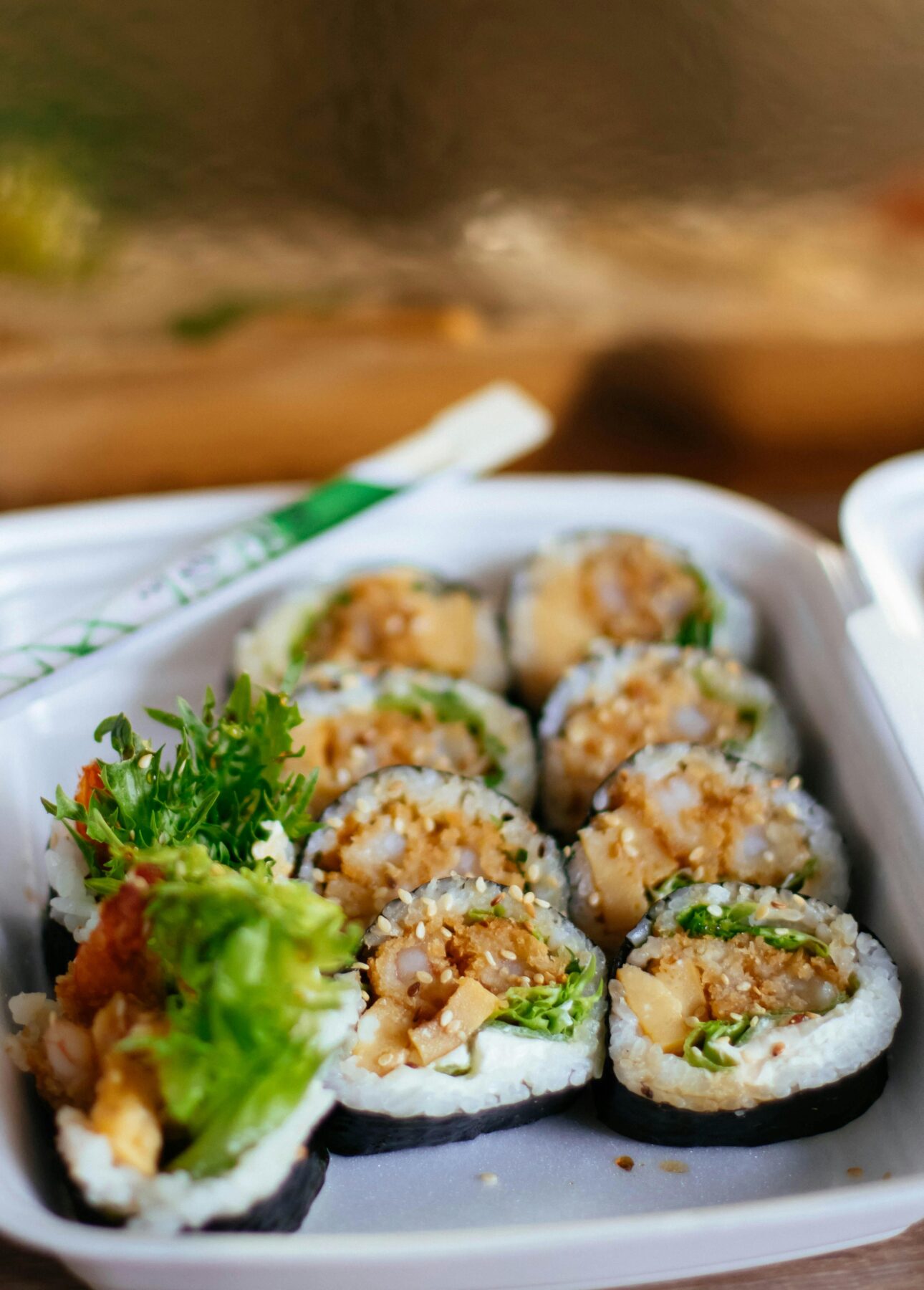Last Updated on January 23, 2025 by Karen
Discover how long leftover sushi can be stored in the fridge, along with tips on how to properly store and reheat them to keep their freshness and flavor intact.

Is Leftover Sushi Safe to Eat? (How Long to Store in the Fridge)
For sushi lovers, it’s not uncommon to find yourself with leftover sushi after a meal. Whether it’s a spicy tuna roll, an Alaska roll, or sushi made with raw fish, knowing how to store and handle leftover sushi properly is crucial to avoid health risks while preserving the fresh ingredients and flavors.
In this guide, we’ll discuss how long sushi lasts in the fridge, the best practices for storing it, and how to minimize potential risks. Additionally, we’ll cover how to refresh your leftover rice and sushi for a tasty meal the next day, so your sushi experience can be a game changer.
Is It Safe to Eat Leftover Sushi?
Yes, leftover sushi can be safe to eat, but the key is proper storage. Sushi made with raw fish sushi, such as a spicy tuna roll or pieces of fish in maki rolls, has a shorter shelf life compared to cooked sushi. As raw foods are particularly sensitive to bacterial growth, the best practice is to store sushi immediately after your meal to prevent any risk of foodborne illness.
For different types of sushi with raw fish or seafood, it should ideally be eaten within 24 hours. The good news is that for cooked sushi—such as fresh sushi rolls of imitation crab, shrimp, or vegetarian sushi rolls—the sushi can last a couple of days in the fridge, as long as it’s stored properly. Remember that following the FDA guidelines and food safety plan is crucial for preserving freshness and safety.

How Long Can Sushi Stay in the Fridge?
The shelf life of sushi depends on the type of sushi you have and the contents of the sushi. Sushi with raw fish or raw seafood, like a spicy tuna roll, should be consumed the following day—within 24 hours—due to its perishable nature. However, sushi made with cooked ingredients (like a California roll or Alaska roll) or deep frying types (like shrimp tempura roll) will last a bit longer in the fridge, typically up to 48 hours.
It’s important to follow specific storage measures to keep sushi fresh and safe. Wrap it tightly in plastic wrap or place it in an airtight container to avoid moisture and air exposure, which can accelerate bacterial growth. Always make sure the sushi is kept at a cold temperature (below 40°F or 4°C) to ensure it remains safe to eat.

How Can You Tell If Leftover Sushi Is Bad?
You can tell if leftover sushi has gone bad by checking for any signs of spoilage. A pungent odor is one of the most obvious indicators—raw fish will smell off as it spoils. Additionally, if the rice has become too dry, slimy, or hard, or if the seaweed (nori) is soggy or discolored, that’s a sign the sushi has exceeded its shelf life.
Signs of mold are also an indicator that the sushi is no longer safe to eat. Keep in mind that even sushi that was freshly made and stored properly may not taste the same as it did on the day of preparation. The sushi’s texture may be affected, and the overall sushi tastes can be altered, so always err on the side of caution if you notice any changes in smell or appearance.
What’s the Best Way to Store Leftover Sushi?
Proper sushi storage is essential to maintaining both food safety and quality. The best way to store sushi is to wrap it in plastic wrap or place it in an airtight container. This helps to preserve the freshness and prevents the sushi from drying out or absorbing excess moisture, which can promote bacterial growth.
Raw sushi, especially when made with raw fish or raw seafood, should be kept refrigerated at all times and consumed within a couple of days. If you’re storing sushi from a food establishment, make sure to follow specific storage measures to ensure safety. For longer sushi storage time, refrigeration is key—never leave sushi at room temperature for longer than 2 hours, as it will enter the danger zone, where bacterial growth becomes a health risk.

What Is the Best Way to Store Leftover Sushi Rice?
To store leftover sushi rice, follow these steps:
- Cool the rice: Let the sushi rice cool down to room temperature before storing it. Avoid putting hot rice directly in the fridge as it can create condensation and affect the texture.
- Transfer to an airtight container: Once cooled, transfer the rice to an airtight container to prevent it from drying out or absorbing other odors in the fridge.
- Cover with a damp cloth (optional): If you want to keep the rice moist, you can place a damp paper towel over the rice before sealing the container. This will help retain some moisture.
- Refrigerate: Store the container in the fridge. Sushi rice will stay good for 3 to 4 days.
To reheat, sprinkle a little water over the rice, then cover and microwave it for 20-30 seconds to help restore some moisture and make it soft again.
Is Freezing Leftover Sushi a Good Idea?
Freezing sushi, especially when it includes raw fish or seafood, is not ideal. Freezing can change the texture of the fish and the rice, which significantly impacts the overall quality of the sushi. While frozen sushi may still be safe to eat, the texture and sushi tastes will be compromised.
For sushi that includes cooked ingredients, freezing can be an option, but it’s still not the best practice. Cooked sushi such as rolls of imitation crab or shrimp may hold up a little better in the freezer, but the rice may become dry and lose its original texture upon reheating. Freezing should only be considered as a last resort, and if you choose to do so, make sure to wrap it securely in moisture-proof paper or aluminum foil to prevent freezer burn.
How Long Does Leftover Sushi Rice Last?
Leftover sushi rice, particularly vinegared rice with the addition of vinegar, can last 1-2 days in the fridge. The method of preservation (use of vinegar) helps to extend the rice’s shelf life slightly compared to plain rice, but for the best flavor and texture, it’s best to consume it within this time frame.
For optimal storage, store the rice in an airtight container to avoid moisture buildup. If you want to keep it for longer, freezing is an option, but the texture will likely change, so use this method of preservation cautiously.

How Do You Reheat Leftover Sushi Rice?
If you’re looking to make fried rice or even reuse the sushi rice for homemade sushi, here’s how to reheat it:
Microwave Method:
- Place the rice in a microwave-safe bowl and add 1-2 tablespoons of water for every cup of rice.
- Cover the bowl with a damp paper towel to trap steam and prevent the rice from drying out.
- Heat in 30-second intervals, stirring in between until the rice is hot and fluffy.
Stovetop Method (Steaming):
- Add a few tablespoons of water to a saucepan with the rice.
- Cover and heat over low-medium heat for about 5-10 minutes.
- Stir occasionally, making sure the rice doesn’t stick to the pan.
Either method will help restore the moisture in the rice and make it suitable for new dishes. For additional flavor, consider adding soy sauce, sesame seeds, or sesame oil to enhance the taste.
What Are the Risks of Eating Leftover Sushi?
The main risk of eating leftover sushi, especially raw sushi, is food poisoning caused by bacterial growth. Raw fish, such as in sushi rolls with pieces of fish, can carry bacteria like Salmonella or Vibrio, which grow rapidly if sushi is not stored correctly. If sushi is left out at room temperature for too long, it can enter the danger zone and increase the risk of foodborne illnesses.
For the safety of young children, pregnant women, and those with weakened immune systems, always follow the FDA food code and specific requirements for proper storage to minimize the risk of foodborne illnesses.

Is Store-Bought Sushi Safe to Eat Later?
Store-bought sushi, like the kind you find in the grocery case, can be convenient, but it often has a shorter shelf life than sushi from a sushi restaurant. If you’ve bought grocery store sushi, it’s best to eat it the next day or within 24 hours. Make sure to check the expiration date and keep the sushi in an airtight container in the fridge.
The safety plan for store-bought sushi should follow the same guidelines as homemade sushi. While store-bought sushi often uses fresh ingredients, it’s still important to store it properly and refrigerate it immediately to avoid health risks.
Enjoying leftover sushi is totally safe if you follow the best practices for storing it. Raw sushi should be consumed within 24 hours, while cooked sushi can last a bit longer in the fridge. Make sure to store your sushi in an airtight container or wrap it in plastic wrap and refrigerate it immediately to preserve freshness and reduce the risk of foodborne illness.
When in doubt, always throw out sushi that seems off. Follow the above guidelines and FDA guidelines for safe food storage and enjoy your sushi leftovers without worry.
Other posts you may like:
Best Homemade Yum Yum Sauce Recipe (vs Spicy Mayo)
Ultimate Guide to Cooking, Serving, and Storing Crab Legs
Shrimp Tempura with Sesame Soy Dipping Sauce















